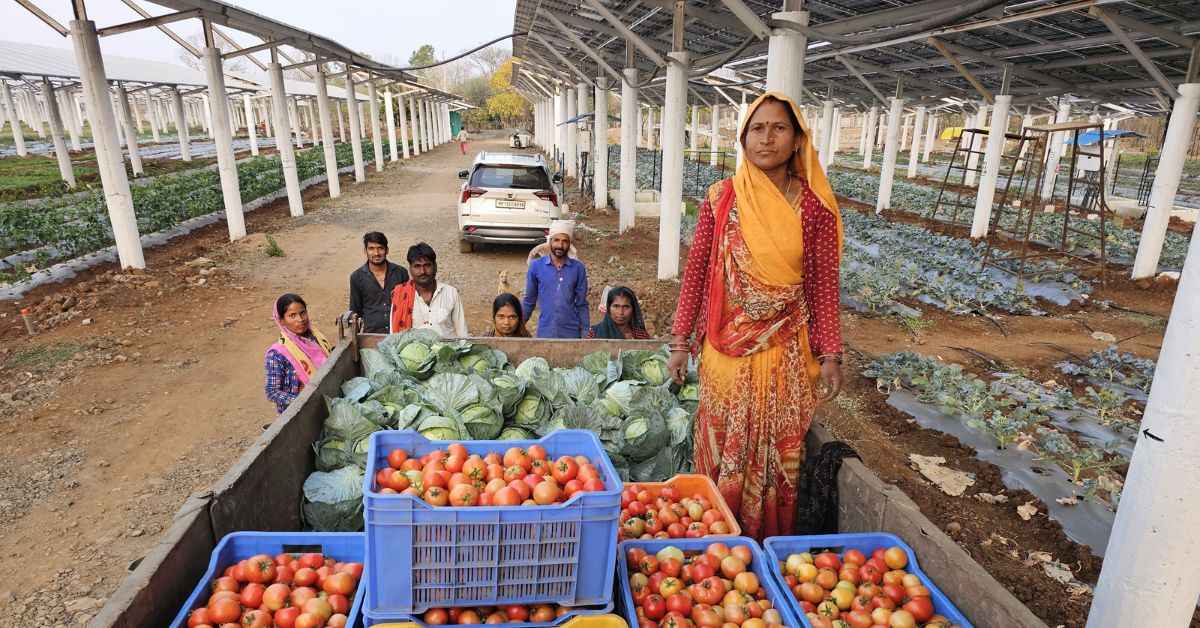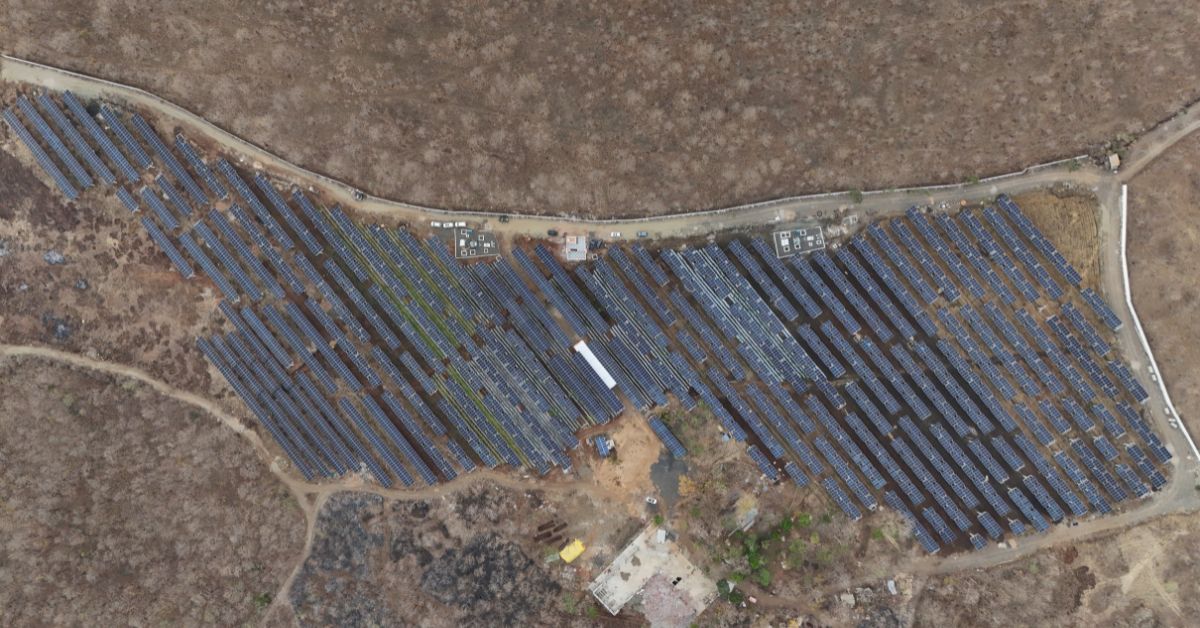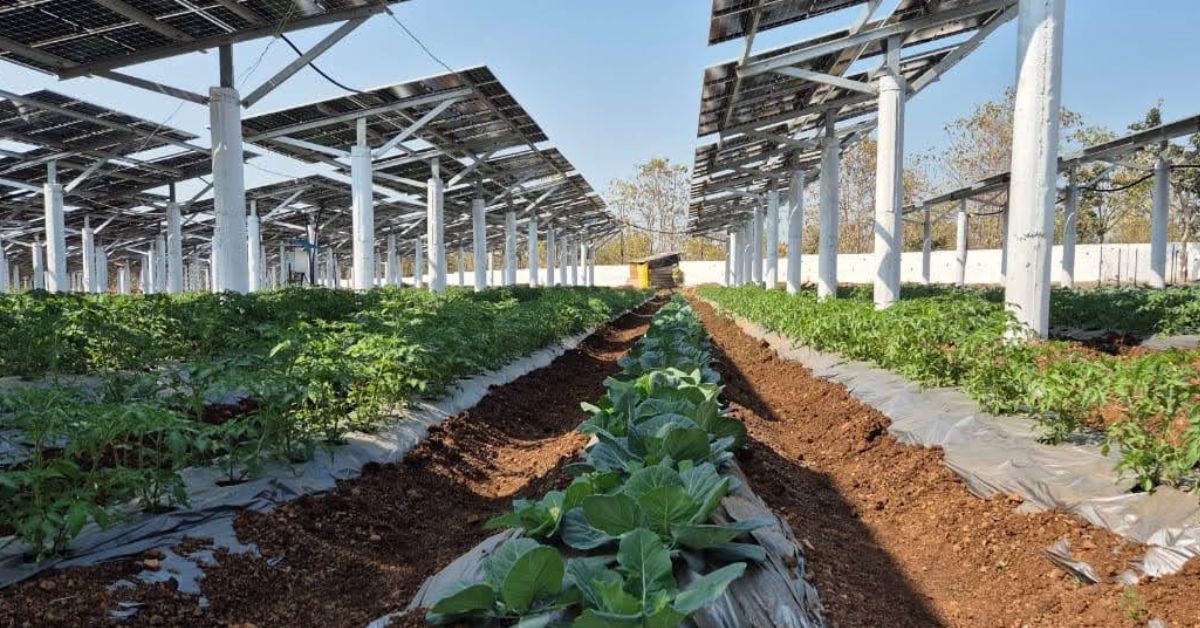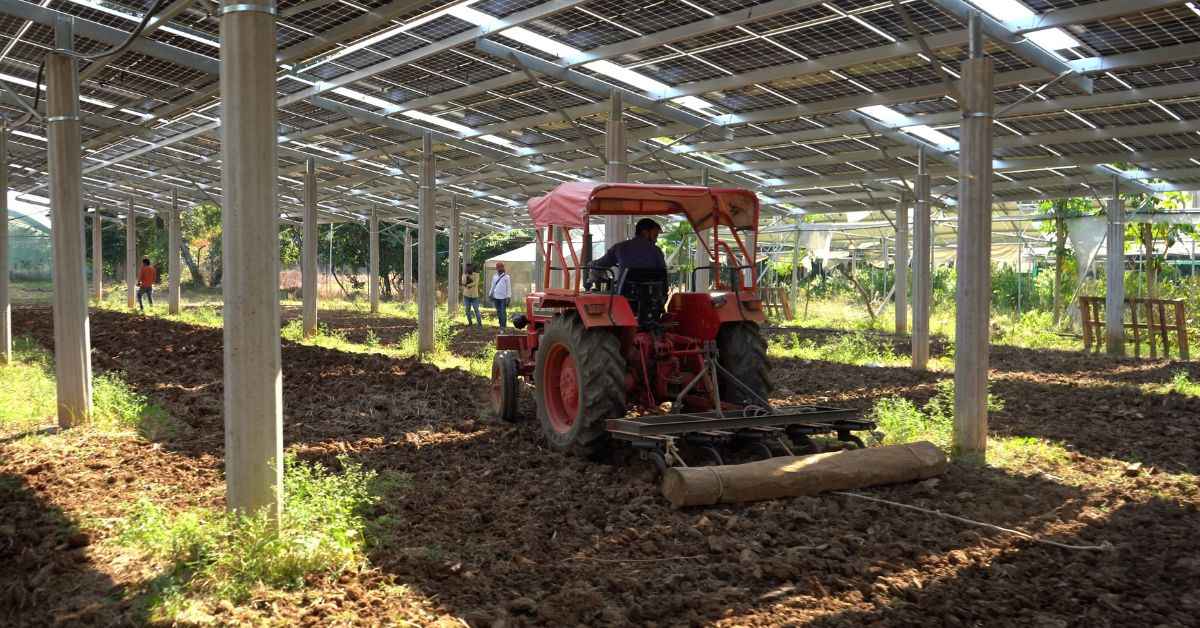Meet The IITian Growing Organic Food Under India’s Largest Agrivoltaic Solar Plant
On his 16-acre farm in Sagar, Madhya Pradesh, Anand Jain has been successfully harnessing solar power while cultivating crops like strawberries, lettuce, and broccoli beneath elevated panels. He’s tapped into the region’s abundant sunlight without giving up fertile land. Instead of placing solar panels directly on the ground, Anand innovated by positioning them above his crops, resulting in a transformation.
“I am a farmer, and I couldn’t give up on my land,” he says. “So I thought, why not harness the sun’s power to generate electricity without losing any of my arable land?”
By adopting agrivoltaics — a technology that merges agriculture with photovoltaic power — Anand created a dual-purpose solution. It involves installing solar panels at a height that still allows enough sunlight to reach the crops below.
 Anand Jain has been harnessing solar power while also cultivating crops like strawberries, tomatoes, and cabbage.
Anand Jain has been harnessing solar power while also cultivating crops like strawberries, tomatoes, and cabbage.
The panels generate electricity while also providing shade, which protects crops from extreme temperatures. This synergy enhances both crop yields and energy generation, allowing the farm to thrive while supplying excess electricity to the grid.
Anand’s philosophy is simple: create a partnership between sun, soil, and sustainability. We sat down with the 59-year-old to learn how agrivoltaics could be a game changer in India’s efforts to achieve 280 GW of solar capacity by 2030.
Addressing land-use challenges
Anand, an MTech graduate from IIT Roorkee (1985), has always had a knack for solving complex problems. In 1999, he bought a rocky patch of land in a village without electricity, determined to turn it into cultivable farmland. At the time, he relied on diesel generators for basic farm operations, as solar energy wasn’t yet viable.
By the early 90s, he was already experimenting with medicinal plant cultivation. This experience sharpened his farming skills and shaped his belief in the importance of sustainable farming. The defining moment, however, came when a small act of innovation shifted his perspective.
Around five years ago, Anand installed a 7 kW solar panel system at home. A modest attempt compared to today’s standards, it had a big impact. This installation was not just an energy source, it was the seed of an idea—a realisation of the sun’s untapped potential.
Nurturing two futures: Agriculture and energy
Embracing agrivoltaics wasn’t simple. Designing the system required careful planning. Anand drew from European designs, ensuring the panels were angled correctly and spaced to allow easy access for tractors.
The panels stand 11 to 13 feet high, tilted southward for optimal exposure, and spaced 8 metres apart — an engineering marvel built for both efficiency and practicality
 Anand’s farm generates up to 25,000 units of electricity every day.
Anand’s farm generates up to 25,000 units of electricity every day.
To bring his vision to life, Anand was assisted by Manish Khare who runs Khare Energy Pvt. Ltd.
“This is India’s largest agrivoltaic solar plant,” Manish shares with The Better India. “It shows that scalable agrivoltaic systems can work in rural India and help maximise land productivity by integrating solar power and farming.”
He adds, “We strive to promote farming practices that are resilient to climate change and efficient in water use. At the heart of the project is our innovative RCC-based structure, which was designed for optimal performance.”
To begin with, they drilled about 1,600 holes across the farm, and installed one-foot-wide poles about eight metres apart. “This spacing lets me move tractors and other machinery easily on the field,” Anand explains.
 The setup involves installing solar panels at a height that still allows enough sunlight to reach the crops below.
The setup involves installing solar panels at a height that still allows enough sunlight to reach the crops below.
He expands on the environmental benefits of the agrivoltaic approach. The partial shade from the panels helps reduce soil evaporation, conserving water. Anand also uses the mix of sun and shade to suit different crops’ sunlight needs.
His farm generates up to 25,000 units of electricity every day. Under an agreement with the state government, he is selling the power at a fixed rate of Rs 3.07 for the next 25 years.
The project has earned recognition from prominent national and international bodies, including the Indian Agriculture Research Institute (IARI).
However, innovation always comes with challenges. One issue is maintaining the elevated panels, which must be kept clean for optimal performance. Anand has designed a custom tractor-mounted platform to help workers clean the panels safely and regularly.
 Anand ensured the panels were angled correctly and spaced to allow easy access for tractors.
Anand ensured the panels were angled correctly and spaced to allow easy access for tractors.
Critics might argue that the financial burden of transitioning to agrivoltaics is significant. Anand’s 4.5 MW project required a carefully planned investment of Rs 18 crores. But with 70 percent support from banks and the help of the PM-KUSUM scheme (Pradhan Mantri Kisan Urja Suraksha evam Utthaan Mahabhiyan)—a government initiative promoting renewable energy—the financial hurdles became manageable.
Commenting on the country’s push for solar parks, Anand says, “Farmers are losing land due to the expansion of solar power projects. This leads to their displacement and loss of livelihood. Agrivoltaics is a way to respond to land-use challenges associated with solar power projects.”
Through his work, Anand hopes to do more than power his farm. “Agrivoltaics represents an opportunity — a chance for farmers to secure their financial future, engage in sustainable practices, and contribute to broader environmental goals,” he says.
Edited by Vidya Gowri and Tanaya Singh; All images courtesy Anand Jain and Manish Khare.
News